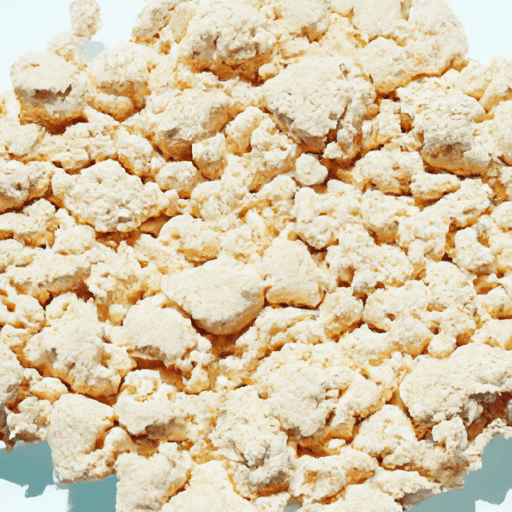All About Dried Yeast: A Cooking Essential
If you have ever baked bread or made pizza dough, chances are you have encountered dried yeast. This humble ingredient plays a crucial role in creating light and fluffy baked goods with that irresistible bread-like aroma. In this post, we’ll delve into the world of dried yeast, exploring its taste, uses in cooking, nutritional value, and some fascinating facts. So grab a cup of tea and let’s get started!
Taste and Aroma
Dried yeast on its own doesn’t have a particularly distinctive taste. However, when activated and combined with other ingredients, it undergoes a fermentation process that creates the characteristic flavors and aromas associated with freshly baked bread. It gives baked goods a subtle nutty and slightly tangy taste, enhancing their overall flavor profile.
Common Uses in Cooking
Baking Bread
Dried yeast is a staple ingredient in bread making. When mixed with flour, warm water, and a bit of sugar, it activates and begins to feed on the sugar, producing carbon dioxide gas. This gas gets trapped in the dough, causing it to rise. This process, known as fermentation, results in beautifully risen bread with a soft and airy texture.
Pizza Dough and Other Pastries
Besides bread, dried yeast is also widely used in making pizza dough and other pastries. It helps the dough rise and provides it with that desirable chewy texture. Whether you’re in the mood for homemade pizza or delectable cinnamon rolls, dried yeast is your go-to ingredient.
Nutritional Value
Dried yeast not only adds flavor but also packs a nutritional punch. It is an excellent source of essential B vitamins, such as thiamine, riboflavin, and niacin. These vitamins are crucial for converting food into energy and supporting a healthy nervous system. Dried yeast also contains protein, fiber, and various minerals, making it a valuable addition to your diet.
Interesting Facts and History
Ancient Origins
The use of yeast in baking can be traced back thousands of years. In ancient Egypt, brewers discovered that the bubbles that formed on the surface of the beer during fermentation could be used to leaven bread. These early bakers would save a portion of the fermented dough to be used as a starter for the next batch, unknowingly harnessing the power of yeast.
Rise of Commercial Production
Dried yeast as we know it today was first produced on a commercial scale in the late 19th century. It allowed bakers to have a consistent and reliable source of yeast without relying solely on natural fermentation methods. This revolutionized the baking industry and made fresh bread accessible to people worldwide.
Varieties of Dried Yeast
There are several types of dried yeast available, each suited for different baking needs. Active dry yeast is the most common variety and requires proofing in warm water before use. Instant yeast is another popular option that can be mixed directly with flour, saving time and effort. Rapid-rise yeast is specially formulated to work quickly, reducing rising times significantly.
Now that you’ve learned all about the wonders of dried yeast, it’s time to roll up your sleeves and explore the world of baking. From fluffy loaves of bread to delicate pastries, this incredible ingredient is your secret weapon for creating homemade treats that will impress family and friends. So go ahead, embrace the magic of dried yeast and unleash your inner baker!
Origin
- Dried yeast, also known as active dry yeast, is a form of yeast that is made by removing the liquid content from fresh yeast through a process known as drying.
- The process of drying yeast dates back centuries and was originally developed as a way to preserve yeast for longer periods. The practice of drying yeast has been recorded as early as Ancient Egypt.
Common Uses
- Dried yeast is widely used as a leavening agent in baking. It is a key ingredient in making bread, pizza dough, and various pastries.
- It is utilized in both commercial and home baking, allowing for consistent results and a reliable rise in dough.
- Dried yeast can also be used to make homemade alcoholic beverages, such as wine and beer, as it ferments the sugars present in the liquid.
Nutritional Benefits
- Dried yeast is a good source of protein, dietary fiber, and various B vitamins.
- It contains essential minerals like zinc, iron, and magnesium.
- Yeast is known for its high content of vitamin B12, which is important for energy production and the health of the nervous system.
Unique Properties and Historical Significance
- Dried yeast has a long shelf life and can be kept in a cool, dry place for an extended period without losing its potency.
- It remains dormant until activated with liquid and sugar, which triggers the fermentation process.
- The invention of dried yeast greatly revolutionized the baking industry by providing a more convenient and reliable way to leaven dough.
- Fleischmann’s, one of the most well-known commercial producers of dried yeast, began manufacturing and selling it in the United States in the late 19th century. This marked a significant milestone in making yeast widely available to home bakers.




Use the share button below if you liked it.
It makes me smile, when I see it.